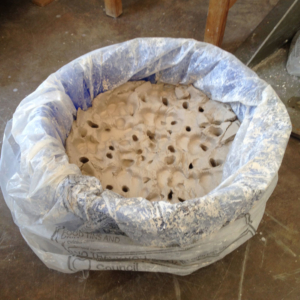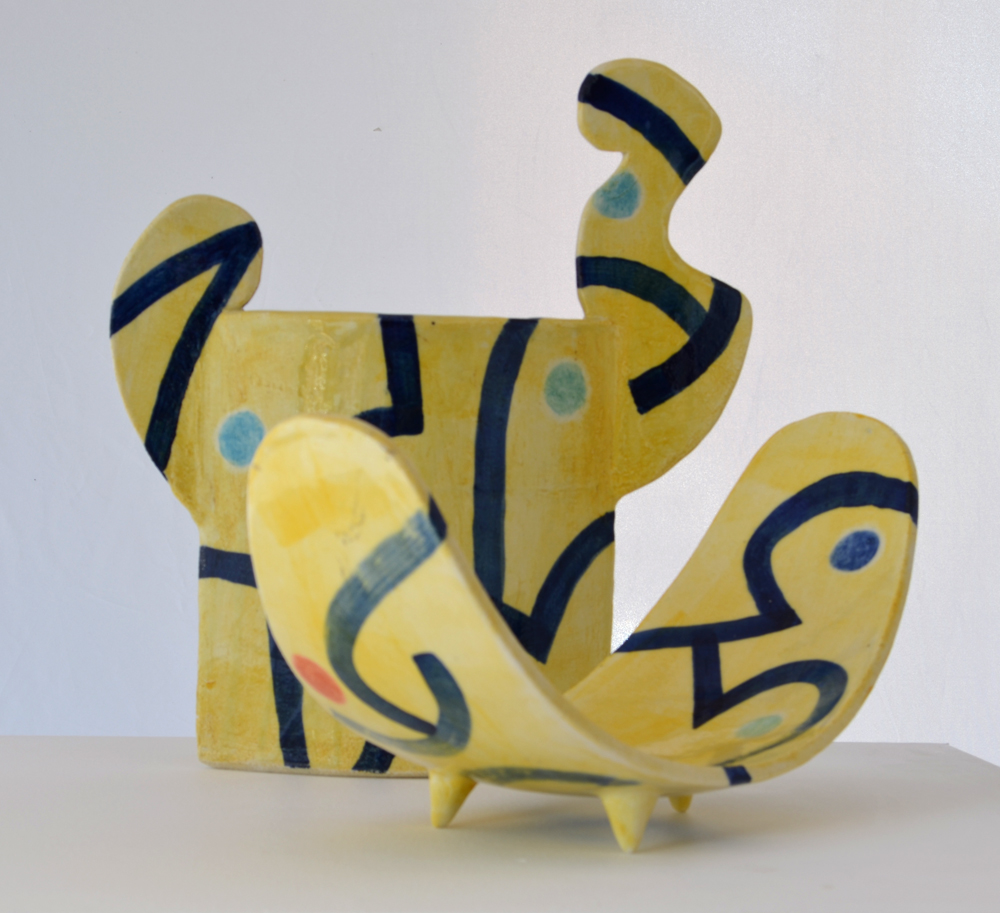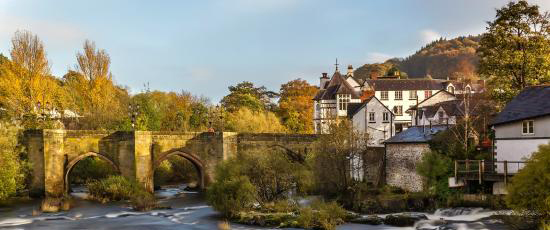Clay is good for you

You can see May Hill on the horizon when you stand on Bradlow Knoll and look down towards Ledbury and the Cotswolds beyond. In the image you can see it slightly to the left of centre, with its distinctive clump of pines standing out from this distance like a pimple, It is where Edward Thomas wrote his poem Words, not long before Ledbury-born John Masefield referred to the outline of the pines in his Everlasting Mercy:
I’ve marked the May Hill ploughman stay
Here on his hill, day after day
Driving his team against the sky
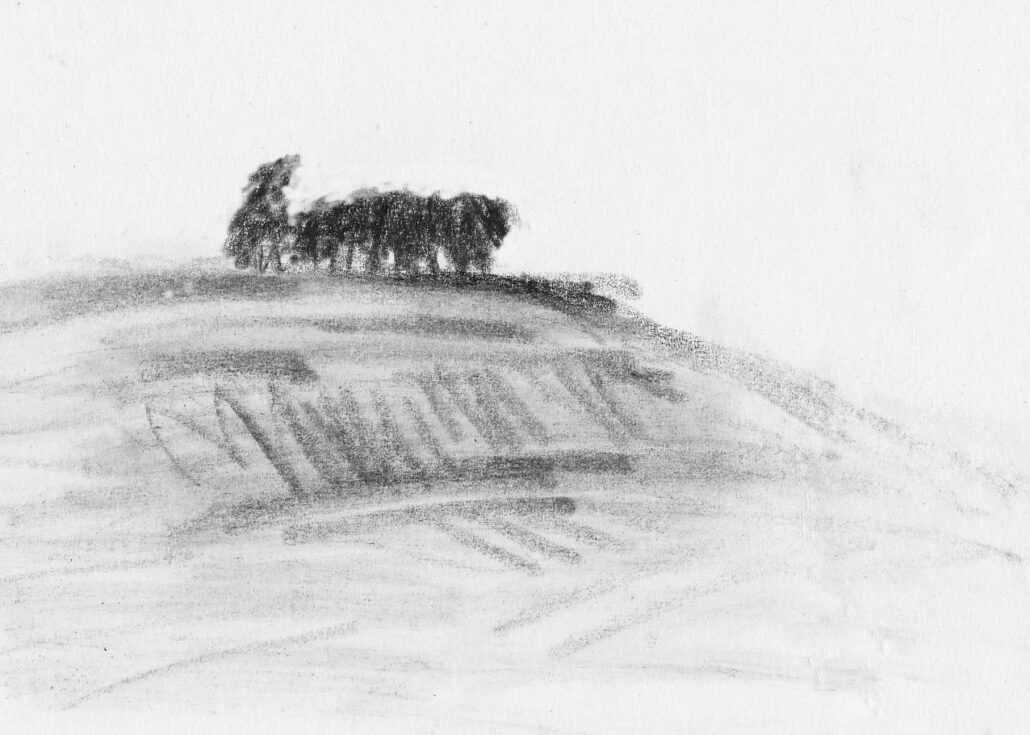
I don’t know about Masefield, but Thomas was certainly a great walker and I often wonder if he ever took this path. If he did, I’m sure he took it in his stride. I am not a hypochondriac but every time I climb the hill to Bradlow Knoll to reward myself with the view of Ledbury I seem to need a longer break to recover my breath and my heart thumps away even more in protest at what I am making it do. A few days ago I sat by the top gate gasping away and thinking of how complex the machinery of our body is, and how all our bits and pieces are connected, rather like an engine – you know, the lungs draw in air and deliver oxygen to our blood, the blood circulates thanks to the heart pumping away, the kidneys clean the blood of toxins, and so on. I thought that if my body were an engine then it would be a second hand and slightly rusty ford escort given to early morning ignition problems and always needing an oil change.

And sometimes I feel like some ol’ engine, gone and lost my driving wheel, as Tom Rush sang all those years ago, but really it is an excuse to give you a link to the great song if you click here.

And where is this going, and where is the connection to ceramics? I do not know yet, but nevertheless, and in the meantime, let me continue with our bodies, their complex needs and some of the problems to which they give rise: ulcers, sore throats, haemorrhoids, high blood pressure, allergies, for example. Well, having got my breath back, I turned away from the panorama at my feet and entered Frith Wood – cool, dank and very quiet – and came across a lot of these small mauve plants growing low to the ground. Self-heal, heal-all, slough-heal and woundwort are all common names for prunella vulgaris, and it is said to help cure all the above, as well as burns, insect bites and herpes.

It is mainly used for sore throats, even severe ones like quinsy, which is an abscess of the tonsils. It is good as a hot tea at the beginning stages of a cold with sore throat. Apparently, self-heal tastes slightly bitter and slightly sweet with a hint of rosemary.
Are ceramics as good for you as prunella vulgaris? Well, potters are the only people, other than children, who play with mud, a base material that is malleable, sensuous and expressive, and, as a result, I reckon the feel-good factor plays a part in reducing stress. Making a clay pot and drinking a self-heal tea is a perfect combination that will lead to improving your quality of life.

Now, do not get confused and start putting clay in your mouth instead of the tea. Pregnant women sometimes crave dirt, clay or charcoal if their bodies are deficient in key minerals but geophagia, as it is called, is best avoided.
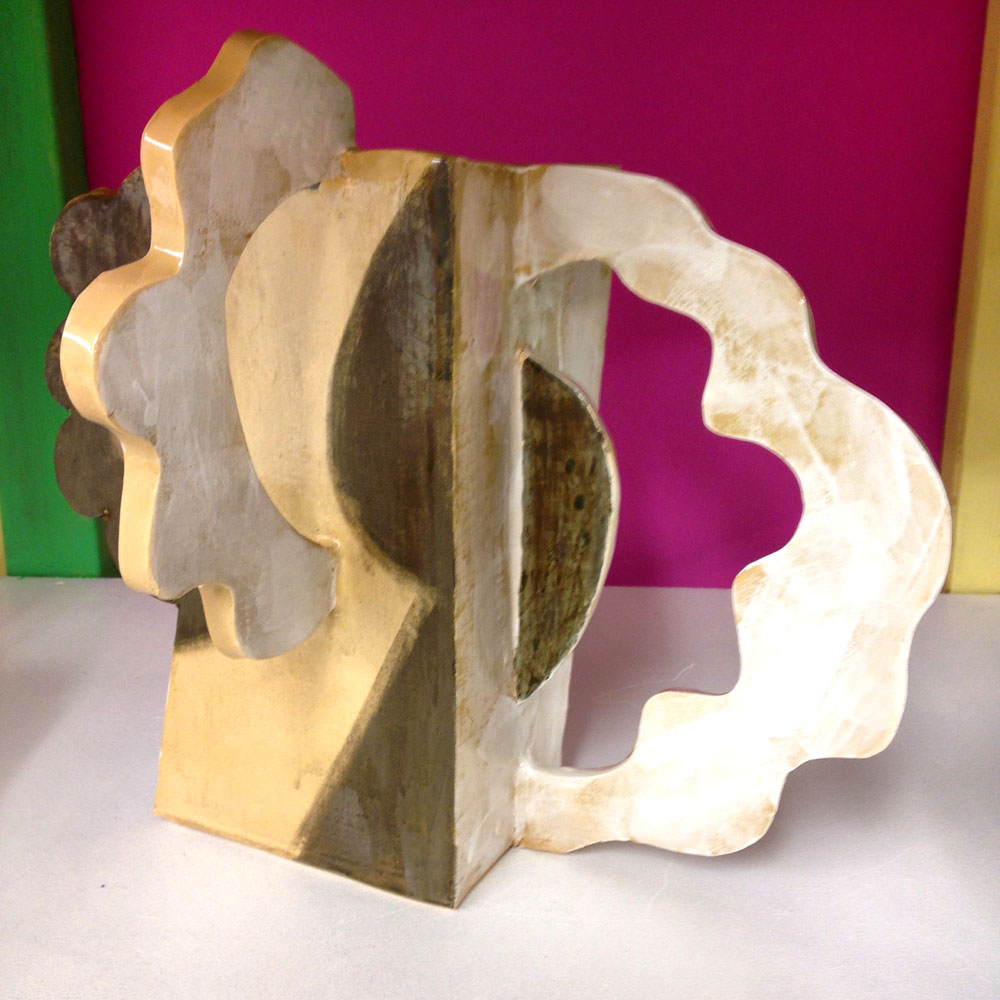
Clay comes in many varieties for the potter. The type one uses depends on the firing temperature, and mine is high so I use stoneware, and because I am a slab potter, I need a certain robust quality which grog provides, tiny pieces of malachite or firesand or chamotte, which has a high percentage of alumina. Anyway, it may taste OK but I do not even take furtive licks. Quartz, feldspar, mica and kaolinite are other minerals you may find in stoneware. Since I fire my pieces at 1275°, they are vitrified and entirely food safe once glazed, and you can then lick them without harm.

All this walking in the wood seems to have somehow crept into the vases, a fusion of Paul Klee and a meandering rambling design. This one above can be seen at the Coastal Gallery in Lymington. Click here.

By way of contrast, there is ragwort. I came across this clump in a clearing near the edge of the wood. Ragwort is a tall erect plant bearing large flat-topped clusters of yellow daisy-like flowers. Do not lick them! Cattle and horses are particularly susceptible to its poisoning.
A type of ragwort was introduced into the UK from the slopes of Mount Etna around 1690 via the Oxford Botanic Garden where, following many years of cultivation, it ‘escaped’ and could be found growing in the masonry of Oxford colleges and walls. During the Industrial Revolution, Oxford became a thriving railway centre and Oxford ragwort found a new habitat in the clinker beds of the railway lines that fanned out of Oxford to all parts of the country. The clinker providing the plant with a replica of the lava-soils of its native home in Sicily and, to be fair, it should not be confused with the common ragwort. I do not know which type the Frith Wood ragwort is. Perhaps Bridget of Malvern or another of you botanical savants could tell me.

Please forgive my botanical meanderings. I just love the names. Herb-Robert is a quick growing plant with explosive seed pods which if allowed to flower, will spread rapidly over a wide area. Also known as red robin, death come quickly, storksbill, fox geranium, stinking Bob, squinter-pip, crow’s foot. Fabulous names.

There was a lot of bramble about, just beginning to flower, so the blackberries will be out by September. To look forward to this I suggest a Bramble cocktail, to be made when the hedgerows are groaning with ripe fruit. Start by squashing six blackberries in a sturdy glass. Add 50ml of good gin, 25ml lemon juice, 25ml sugar syrup (you can just dissolve some sugar in water) and fill the glass two thirds with crushed ice. Mix with a long-handled spoon. Top with more crushed ice, a blackberry and a paper straw.

I always try to say no to gin – but it’s 42.5% stronger than me.




















